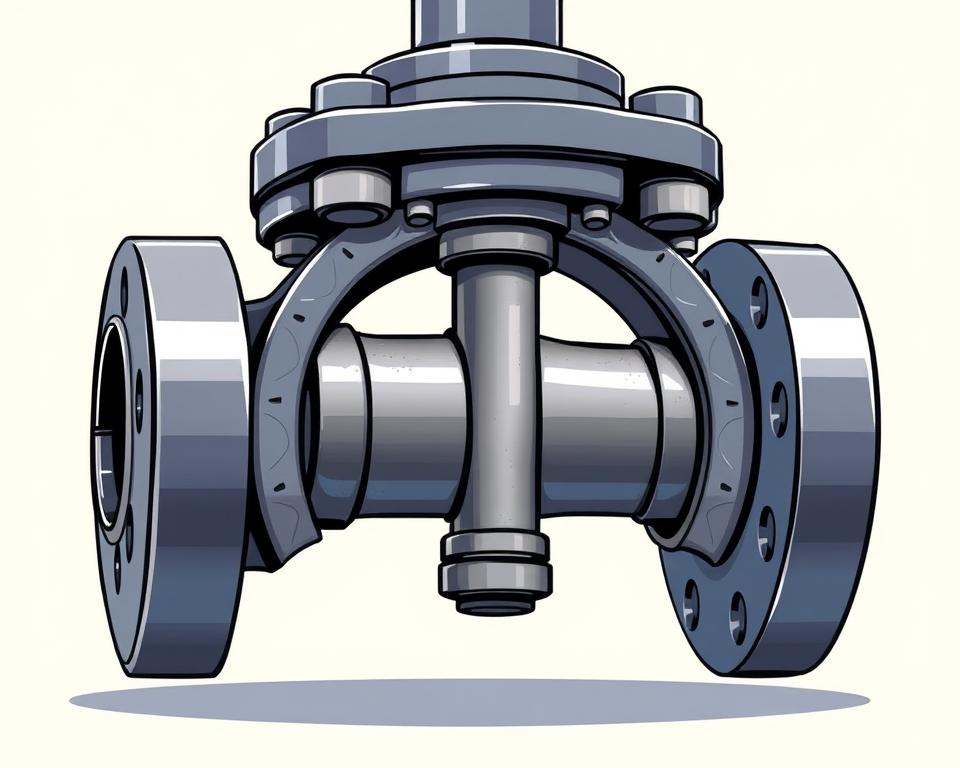Cast Iron Gate Valve Solutions: Long-Lasting Plant Flow Control
Good to know: More than 60% of public distribution networks depend on legacy shutoff equipment for secure isolation in emergencies.
Explore our heavy-duty line of Cast Iron Gate Valve Manufacturer engineered for longevity in industrial, commercial, and municipal use across the United States. Every valve combines a rugged body-and-bonnet assembly with a time-tested gate design to withstand wear and limit corrosion under variable pressure and temperature cycles.
The unobstructed gate cuts flow restriction when open, letting systems convey water and compatible media with lower pressure drop. Designers and maintenance teams prefer the service-friendly serviceability, standard connection options, and easy-to-source parts that simplify selection and repairs.
This family includes a variety of series and class ratings to fit common duty ranges, end connections, and operator preferences. Expect predictable sealing, steady operating torque, and budget-friendly ownership aimed at uptime and low life-cycle cost.
Why It Matters
- Built for durable shutoff and dependable flow control in demanding environments.
- Robust build helps resist wear, corrosion, and mechanical stress.
- Gate geometry offers minimal resistance and reduced pressure loss.
- Available in a range of series and class ratings to meet common specifications.
- Easy maintenance, standard parts, and consistent sealing improve uptime.
Reliable, Precise Flow Control with Cast Iron Gate Valves
Engineered shutoff units with accurate wedges and finished seats offer steady performance across commissioning, operation, and shutdown cycles. Stout iron bodies and tight-sealing seats enable repeatable sealing. That robustness helps ensure safe isolation and reduces unplanned downtime.
Smooth-operating behavior reduce handwheel effort and help techs position the wedge accurately. Straightforward stems and common accessories simplify adapting a valve to manual or automated controls. Reduced effort accelerates routine checks and repairs.

Stem Types and Performance
| Aspect | OS&Y-style Rising Stem | Non-Rising Stem |
|---|---|---|
| Position indication | High — easy visual readout | Low — minimal external cue |
| Overhead clearance | Requires vertical space | Good for confined/buried installs |
| Maintenance | Easy to inspect | Compact with comparable life |
Fully open, the unobstructed passage yields minimal headloss and smooth throughput. Tight shutoff cuts leakage risk and helps keep target pressure for downstream equipment. In combination, these traits reduce total life-cycle cost and enhance system uptime across typical commercial/light-industrial applications.
Specs, Designs, and Options for Cast Iron Gate Valves
Key design selections—body alloy, stem type, and flange standard—dictate fit and performance as well as serviceability.
Body and Bonnet Build
The body and bonnet are made from cast iron for strength and vibration resistance. Accurate guides hold the gate true for dependable sealing.
Rising Stem vs Non-Rising Stem
A rising stem provides a clear visual indication of position and is simple to inspect but requires overhead space. A non-rising stem minimizes vertical space and keeps threads protected inside the bonnet.
Both stem designs work with standard handwheels and can be actuator-ready or add-on position indicators when automation is required.
Class 125 Guidance
Class 125 is common for water and general service within normal temperature envelopes. Refer to published pressure-temperature limits to ensure suitability for the intended operating envelope.
Connections and Face-to-Face Dimensions
| Item | Standard | Remarks |
|---|---|---|
| Bolt circle | Standard ASME drilling | Fits standard piping layouts |
| Face-to-face | Industry series lengths | Verify exact length on spec |
| Bolts | Grade and torque per spec | Select gasket to suit service |
- Sizes/series: covering small lines through large mains with multiple series and trim options for long life and easy service.
- Trim & packing: seat and wedge materials balance tight shutoff and longevity; improved packing with bonnet gaskets bolster stem sealing.
- Install tips: confirm end-to-end dimensions, flange bolt patterns, and torque requirements before installation.
Applications, Compliance, and System Integration
Applications for these Resilient Seated Gate Valve cover municipal mains, building risers, and pump-room isolation points where reliable shutoff is critical.
Water distribution and fire systems often use these devices as sectional and control points. They offer clear position feedback and reliable shutoff for life safety and utility networks.
Flow, shutoff, and bi-directional service
The gate design allows shutoff in both flow directions when installed as specified. This versatility simplifies layout decisions and enables redundant piping.
Serviceability and Bonnet Integrity
Accessible bonnet fasteners, guided gates, and replaceable packing streamline inspection/repacking. Right packing setup preserves stem sealing through repeated cycles.
Indicators, OS&Y, and Orientation
External indicators and OS&Y styles provide visible open/closed status for inspections. Even with bi-directional service, follow recommended direction orientation and clearance rules to ensure safe operation.
| Use Case | Key Benefit | Spec Check |
|---|---|---|
| Distribution mains | Reliable isolation | Verify Class 125 limits |
| Sprinkler/standpipe | Inspector-friendly indication | Use indicator or OS&Y option |
| Mechanical rooms | Service access | Verify flange and F2F |
Conclusion
Choose proven shutoff equipment combining sturdy construction and predictable flow control.
These valves deliver durable isolation and reliable control across water and utility systems. Count on straightforward installation and service-friendly upkeep for lasting reliability.
Core specs include class 125 rating, a robust body and bonnet, and engineered stem sealing to maintain performance across building and plant environments.
Several series in common sizes, along with handwheel or actuator-ready configurations, make system matching simple. Clear position indication and smooth stem travel improve daily operation and response under shifting demands.
The gate wedge and seat supports tight shutoff and low pressure drop. Confirm sizes, end connections, and accessories at specification time to accelerate purchasing and commissioning.
Choose valves manufactured to stringent standards. Our team can review class, sizing, and series choices to align equipment with your operating and maintenance goals.
